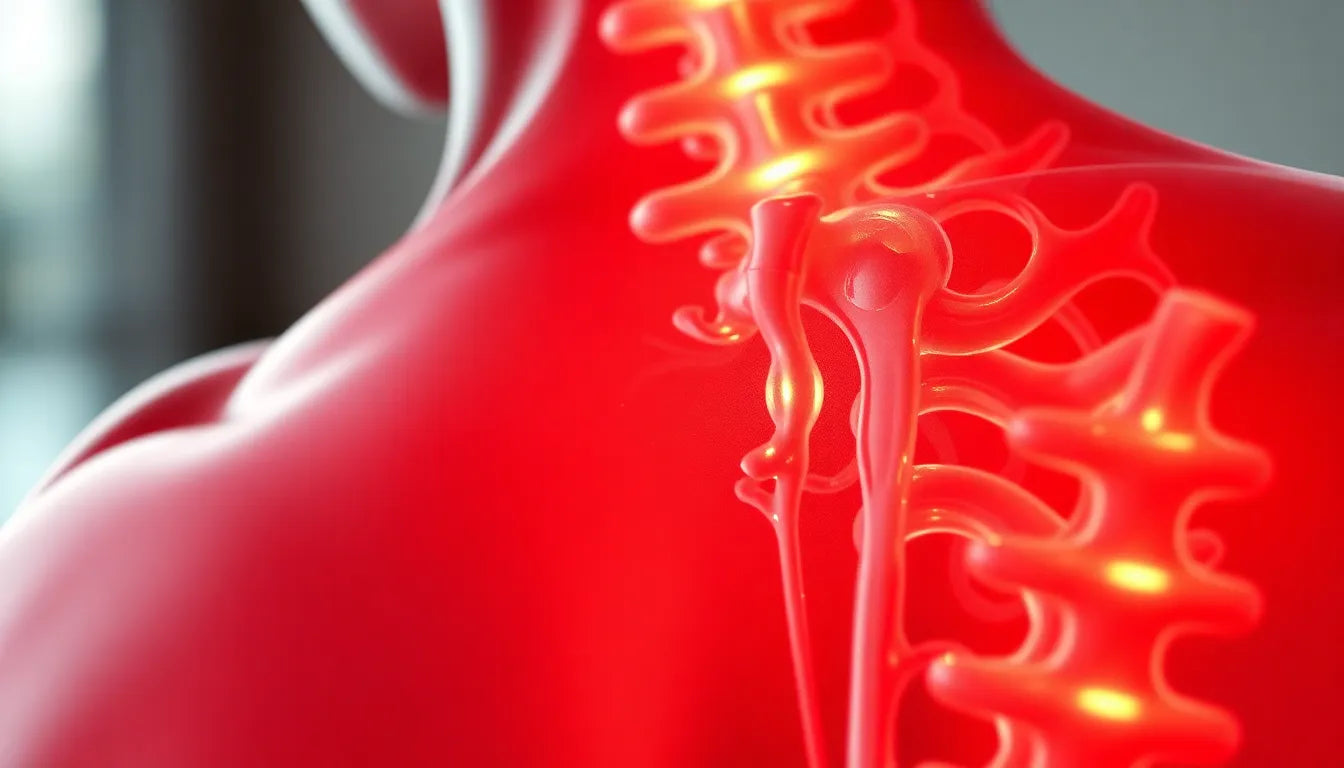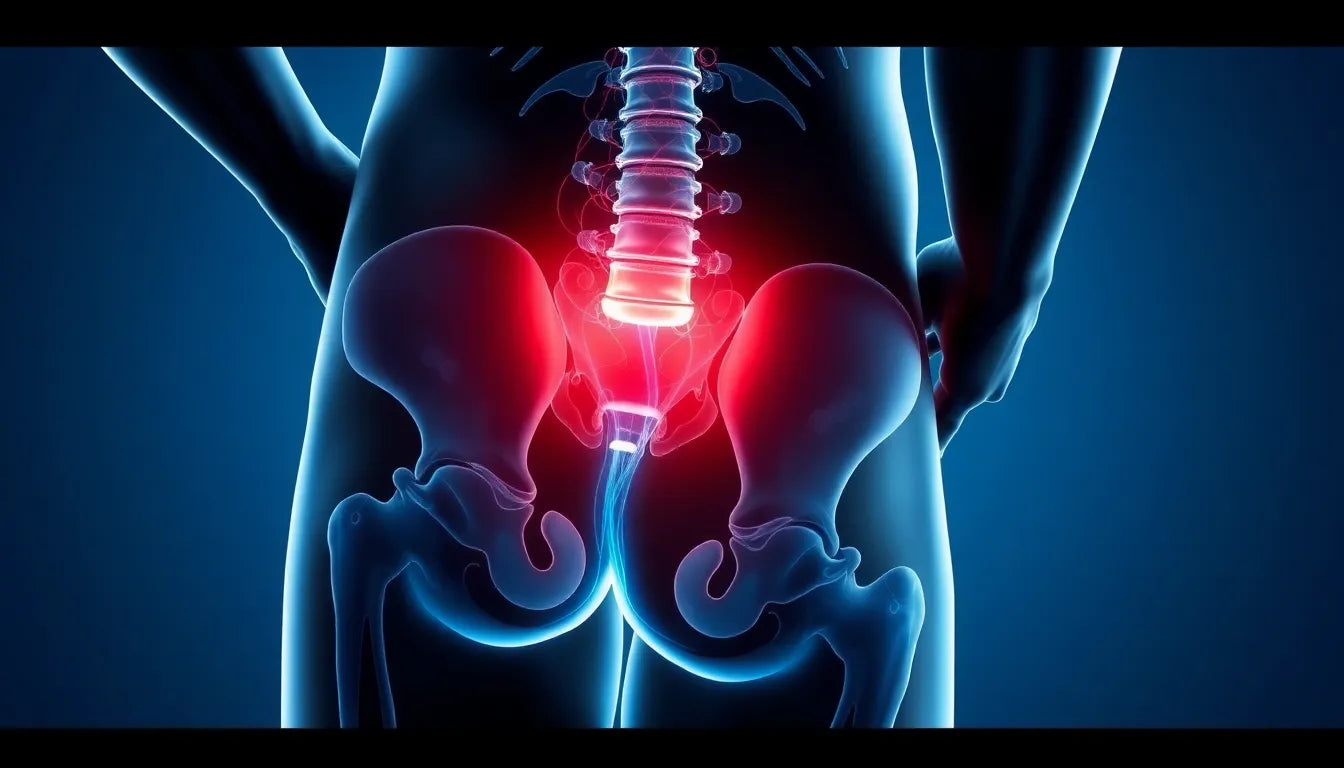Living with a herniated disc can be a challenging experience, often accompanied by pain and discomfort. This common spinal condition occurs when the soft inner gel of a spinal disc pushes through a crack in its tougher exterior. While the idea of surgery might seem daunting, the good news is that most herniated discs can heal naturally, without the need for surgical intervention. Understanding the journey to natural healing can help alleviate concerns and provide a clearer path to recovery.
Understanding the journey to natural healing
Herniated discs are a prevalent issue, affecting a significant portion of the population at some point in their lives. The fear of surgery often looms large for those diagnosed, as the prospect of invasive procedures can be unsettling. However, it's reassuring to know that many individuals recover from a herniated disc through non-surgical means. This natural healing process is a testament to the body's remarkable ability to repair itself.
The journey to recovery without surgery involves understanding the stages of healing and the factors that influence the timeline. Each person's experience is unique, with recovery times varying based on the severity of the herniation, the individual's age, overall health, and lifestyle choices. While some may find relief in a matter of weeks, others might require a longer period to fully heal.
Setting the stage: what to expect
When embarking on the path to natural healing, it's important to set realistic expectations. The timeline for recovery can vary widely, typically ranging from four to eight weeks for significant improvement. In some cases, individuals may experience relief in as little as two weeks, while others might take up to six months to fully recover. The healing process often unfolds in stages, each marked by distinct changes in symptoms and physical capabilities.
During the initial phase, known as the acute inflammation phase, symptoms can be most pronounced, lasting from one to two days up to two weeks. This is followed by the tissue repair phase, where inflammation subsides and the body begins to heal the damaged disc. This phase can last from two to six weeks, during which time gentle activities and lifestyle modifications can support the healing process.
Finally, the remodeling or stabilization phase occurs, typically spanning from six weeks to three months. During this stage, individuals often notice a marked improvement in pain levels and can gradually return to more strenuous activities. Patience and careful progression in physical activity are crucial to ensuring a complete recovery.
In conclusion, while the journey to healing a herniated disc naturally may require time and patience, the outcome is often positive. By understanding the stages of recovery and setting realistic expectations, individuals can navigate this process with confidence, knowing that their bodies are capable of healing without the need for surgery.
average healing timeline for herniated discs
When considering how long it takes for a herniated disc to heal without surgery, it's essential to understand that the timeline can vary significantly among individuals. Generally, most people begin to see improvements in their symptoms within 4 to 8 weeks. However, recovery is deeply personal and can depend on factors such as the severity of the herniation, the individual's age, overall health, and their commitment to non-surgical therapies.
While many individuals experience relief in as little as two weeks, others may take up to six months to fully recover. The key is to remain patient and adhere to recommended treatment plans, which can significantly influence the speed and success of recovery.
recovery phases explained
acute inflammation phase (1-2 days to 2 weeks)
This initial phase is often the most painful, characterized by sharp pain, inflammation, and limited mobility. During this time, the body's immune response kicks in to manage the injury. It's crucial to manage pain and reduce inflammation through methods such as rest, ice packs, and over-the-counter pain relievers. Gentle movements and avoiding activities that exacerbate pain can also help navigate this challenging phase.
tissue repair phase (2 to 6 weeks)
As the inflammation begins to subside, the body enters the tissue repair phase. Here, the herniated disc material may start to retract, and the surrounding tissue begins to heal. Engaging in light physical therapy and gentle exercises can support this process, promoting flexibility and strength without overstraining the affected area. Activities such as walking, stretching, and water-based exercises can be beneficial.
remodeling/stabilization phase (6 weeks to 3 months)
During this phase, significant improvements in pain levels are typically observed. Individuals can gradually return to more strenuous activities, but it's important to proceed with caution and under the guidance of healthcare professionals. Strengthening exercises and posture corrections are essential to ensure long-term recovery and prevent future episodes. Patience is key, as rushing this phase can lead to setbacks.
role of non-surgical therapies
Non-surgical therapies play a vital role in the natural healing of herniated discs. Physical therapy, in particular, is highly effective in reducing pain and improving function. A tailored physical therapy program can help strengthen the muscles supporting the spine, improve flexibility, and promote proper posture, all of which contribute to faster recovery.
Additionally, lifestyle modifications such as maintaining a healthy weight, quitting smoking, and incorporating regular exercise can significantly enhance the healing process. Medications, such as non-steroidal anti-inflammatory drugs (NSAIDs), may also be prescribed to manage pain and inflammation during the recovery phases.
Ultimately, the journey to healing a herniated disc without surgery is a testament to the body's resilience and capacity for self-repair. By understanding the typical timeline and stages of recovery, individuals can approach their healing journey with confidence, knowing that a combination of patience, professional guidance, and personal commitment can lead to a successful, natural recovery.
Returning to daily activities
Once you begin to experience relief from the acute symptoms of a herniated disc, gradually reintroducing physical activity can significantly aid your recovery. Light activities, such as walking, can be resumed as soon as they are comfortable, often within a few days to a week. Walking not only helps maintain cardiovascular health but also promotes circulation, which can aid in the healing process.
As you progress, consider incorporating gentle exercises that focus on strengthening the core muscles and improving flexibility. Activities such as yoga or Pilates, under the guidance of a professional, can be beneficial. These exercises help support the spine and prevent future injuries. However, it's crucial to listen to your body and avoid any movements that cause pain or discomfort. Gradually increase the intensity and duration of your exercises as your symptoms improve.
Self-management tips for herniated disc recovery
Managing a herniated disc at home involves a combination of rest, ergonomic adjustments, and stress management techniques. Ensure that your workspace is set up to support good posture, with your chair and desk at appropriate heights to minimize strain on your back. Consider using a lumbar support cushion to maintain the natural curve of your spine while sitting.
Stress management is also essential, as stress can exacerbate pain perception. Techniques such as deep breathing exercises, meditation, or mindfulness can help reduce stress and promote relaxation. Additionally, ensure you are getting adequate sleep, as this is crucial for the body's repair processes.
Resources such as online forums, support groups, and educational materials can provide valuable information and emotional support during your recovery journey. Engaging with others who have experienced similar challenges can offer encouragement and practical advice.
Conclusion: Emphasizing natural healing
The body's ability to heal a herniated disc naturally is a remarkable testament to its resilience. By understanding the stages of recovery and adopting a proactive approach to self-care, individuals can navigate their healing journey with confidence. While the process may require patience, the outcome is often a significant reduction in symptoms and a return to normal activities without the need for surgery.
Consulting with healthcare professionals for personalized advice is essential, as they can provide tailored recommendations based on your specific condition and needs. Remaining optimistic and committed to your recovery plan can lead to a successful, natural recovery.
Frequently asked questions
How long does it typically take for a herniated disc to heal without surgery?
Most cases improve within 4 to 8 weeks, with full recovery taking up to three months for many individuals.
What are the first signs that my herniated disc is healing?
Reduction in pain and inflammation, increased mobility, and the ability to perform daily activities with less discomfort are common indicators of healing.
Are there any activities I should avoid during recovery?
Avoid heavy lifting, high-impact sports, and any activities that exacerbate pain until cleared by a healthcare professional.
When should I consider seeing a doctor about my herniated disc?
If symptoms persist beyond the typical healing window or worsen, or if you experience severe pain, numbness, or weakness, seek medical advice.
Can lifestyle changes really make a difference in my recovery?
Yes, incorporating healthy habits such as regular exercise, proper posture, and stress management can significantly aid recovery and prevent recurrence.
```html
Sources
- ADR Spine. "How Long Does a Herniated Disc Take to Heal?"
- Mayo Clinic. "Herniated Disk Symptoms Often Effectively Treated Without Surgery."
- Spine MD. "Signs a Herniated Disc is Healing: Timeline & Recovery."
- Armor Physical Therapy. "How Long Does It Take for a Herniated Disc to Heal Without Surgery?"
- HealthCentral. "Herniated Disc Healing: Timeline and Signs of Improvement."
- Dr. Kevin Pauza. "How Long Until My Herniated Disc Heals Naturally Without Surgery?"
- Excel PT. "How Long for Herniated Disc to Heal Without Surgery."
- Dr. Likover. "Treatment Options for a Herniated Disc (Non-surgical and Surgery)."



